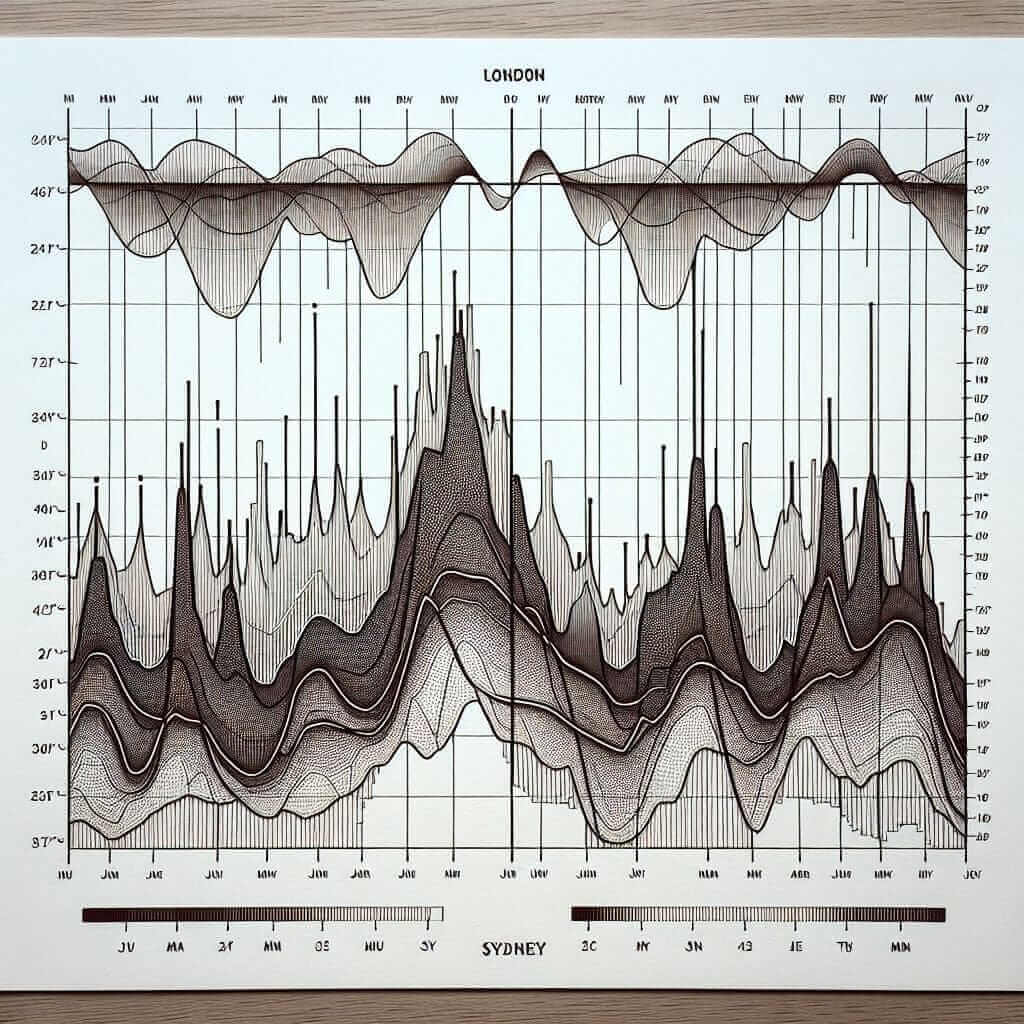Understanding the Importance of Graph Analysis in IELTS Writing Task 1
In the IELTS Writing Task 1 (Academic), you’ll often encounter various types of graphs, charts, or diagrams. Being able to analyze and describe these visuals accurately and effectively is crucial for achieving a high band score. This guide will equip you with the essential skills and strategies to confidently tackle any graph in your IELTS exam.
Steps to Analyze Graphs Effectively
1. Identify the Graph Type and Purpose
Before diving into the data, take a moment to understand the type of graph presented:
- Line graph: Shows trends over time.
- Bar chart: Compares different categories.
- Pie chart: Illustrates proportions of a whole.
- Table: Presents data in rows and columns.
- Process diagram: Explains a process or cycle.
Next, determine the main purpose of the graph. What story is it trying to tell? This will help you focus your analysis and writing.
2. Analyze Key Features and Trends
Now, delve into the graph’s details and identify significant features:
- Highest and lowest values: Note the peaks and valleys in the data.
- Trends: Look for upward, downward, or fluctuating patterns.
- Exceptions: Identify any data points that deviate from the overall trend.
- Relationships: Analyze connections between different data sets (if applicable).
3. Organize Your Findings
Once you’ve analyzed the graph, organize your findings logically. You can use the following structure:
- Introduction: Paraphrase the graph’s title and briefly describe its type and purpose.
- Overview: Present the most significant trends or patterns you observed.
- Specific details: Support your overview with specific data points, comparisons, and contrasts.
Illustrative Example from an IELTS Exam
Let’s consider a line graph showing “Average Monthly Temperatures in London and Sydney.”

Analysis:
- Type: Line graph (showing trends over time).
- Purpose: To compare average monthly temperatures in two cities.
- Key features:
- London has a wider temperature range than Sydney.
- Sydney’s hottest month is February, while London’s is July.
- Both cities experience their lowest temperatures in January.
Tips for Achieving a High Score
- Use appropriate vocabulary: Utilize a range of vocabulary related to trends, comparisons, and data interpretation.
- Be accurate and specific: Use data from the graph to support your statements.
- Paraphrase effectively: Avoid simply copying words from the question.
- Maintain coherence and cohesion: Use linking words and phrases to connect your ideas smoothly.
- Proofread carefully: Check for any grammatical or spelling errors.
Conclusion
Mastering graph analysis is an essential skill for success in IELTS Writing Task 1. By following these steps and consistently practicing, you’ll gain the confidence to tackle any graph that comes your way. Remember, clarity, accuracy, and a well-structured response are key to achieving a high band score.